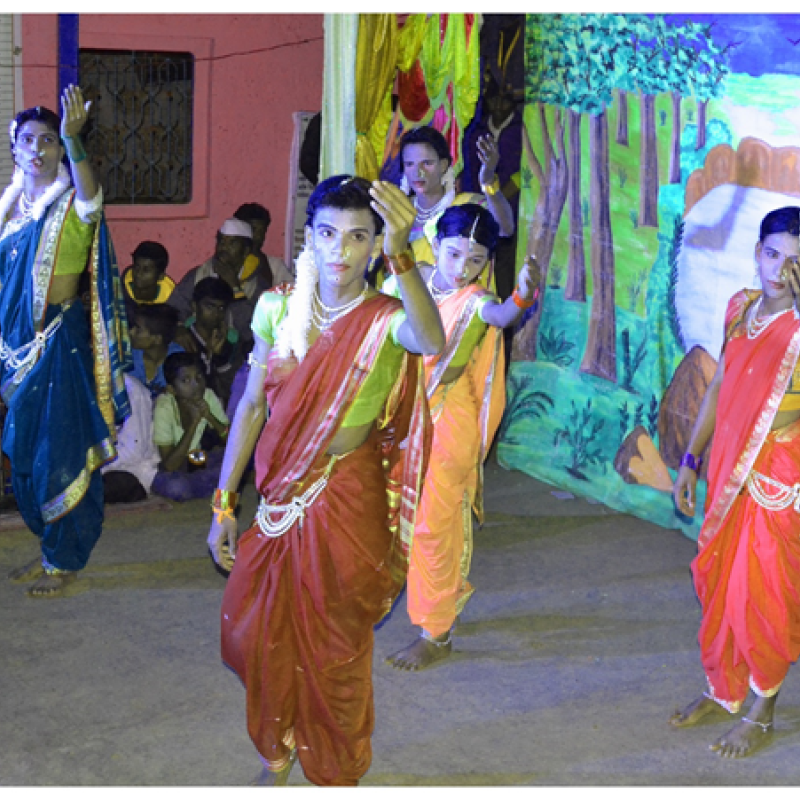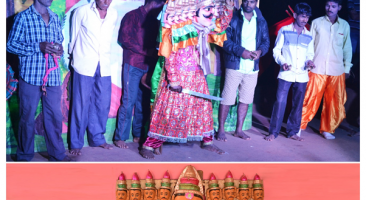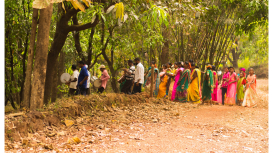Gods and demons are summoned once a year on Shimga, the festival of Holi, in the Konkan belt of Maharashtra and Goa. Young boys and men perform roles of good and evil, beasts and birds, and women and men. Khele performances brighten the full moon nights of Holi Purnima as well as auspicious events such as weddings, naming ceremonies, etc. These performances were mainly dramatisations of the Ramayana, the Mahabharata and the folk stories of the Konkan region. However, today they have transcended the religious bracket and even talk about social issues and current affairs. With an unexpected absence from academia, Khele merits an opportunity for documentation. The module focusses on the Khele performance tradition of Ratnagiri. Since their form, appearance and even language have altered in the last two decades, the evolution of the art of Khele is explored, as is the practice and performance of Khele since the 1990s. There are three elements to the study—performance, story and props, from the perspective of their temporal evolution. There is engagement with the script, props, costumes and the wooden masks made for the performance, in the context of the socio-cultural importance of Khele and its place in the rural society.
Transformations in Traditional Performances of Konkani Khele
in Module
Published on:

Sonam Ambe
Following her education in architecture, Sonam turned towards the social sciences to comprehend holistic influences of built environment on people. She was conferred with the MPhil (Gold) Institute Silver Medal 2013 at IIT Bombay. She was felicitated with the MASA Best Teacher’s Award (2016) and has received research grants from the Indian Ministry of Culture in 2017, and the St. Gobain Scholarship in 2018. She has authored a popular travel guide, ‘The Other Mahabaleshwar’, in 2018.


